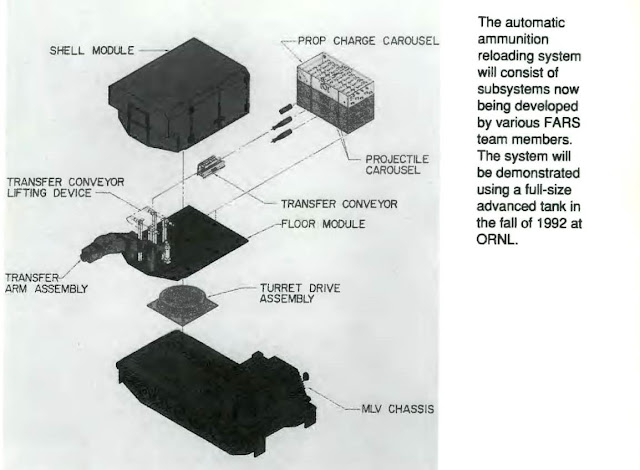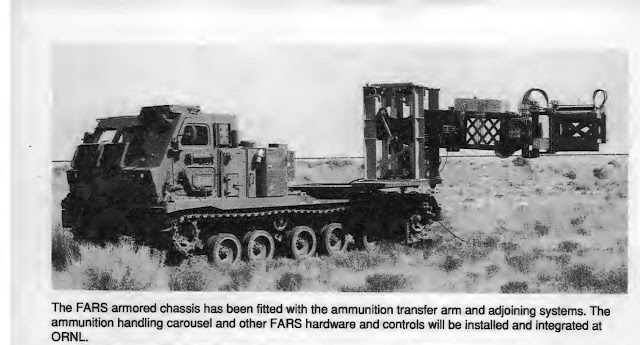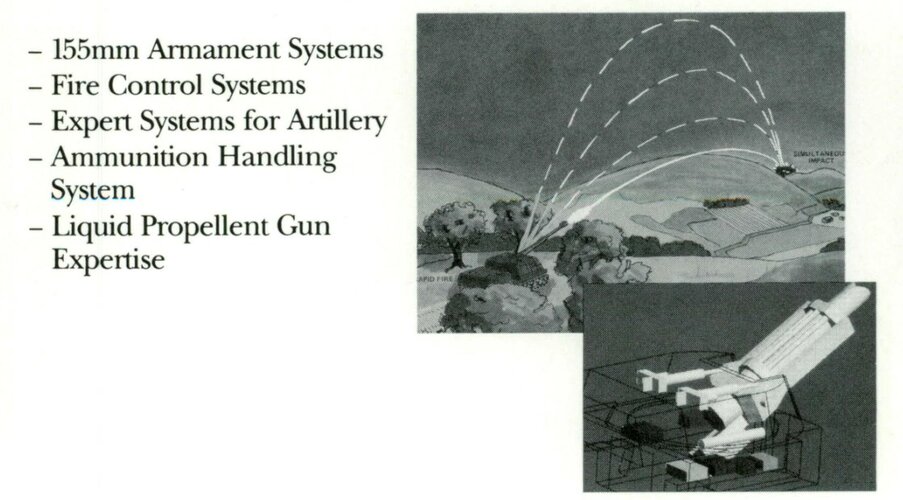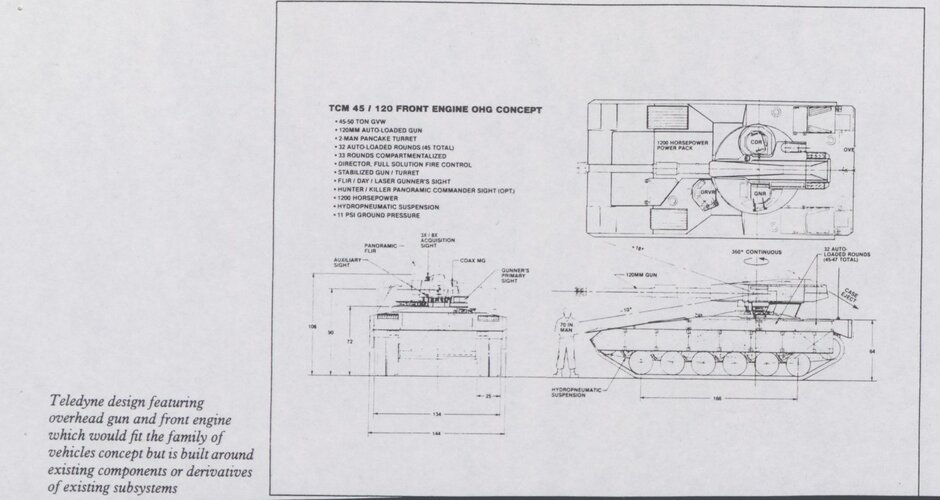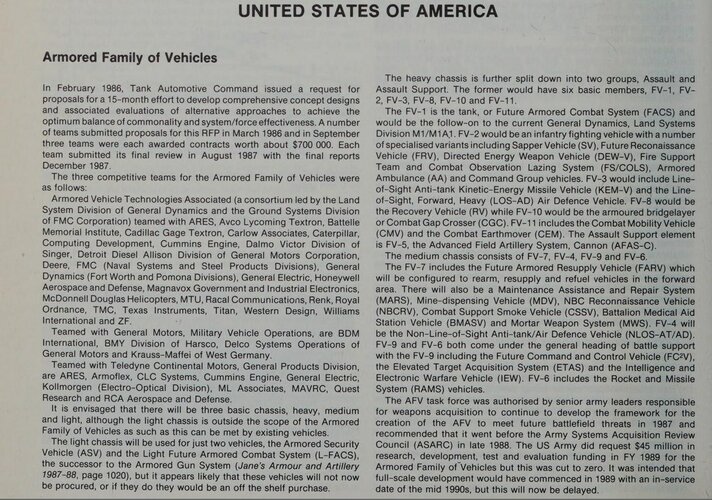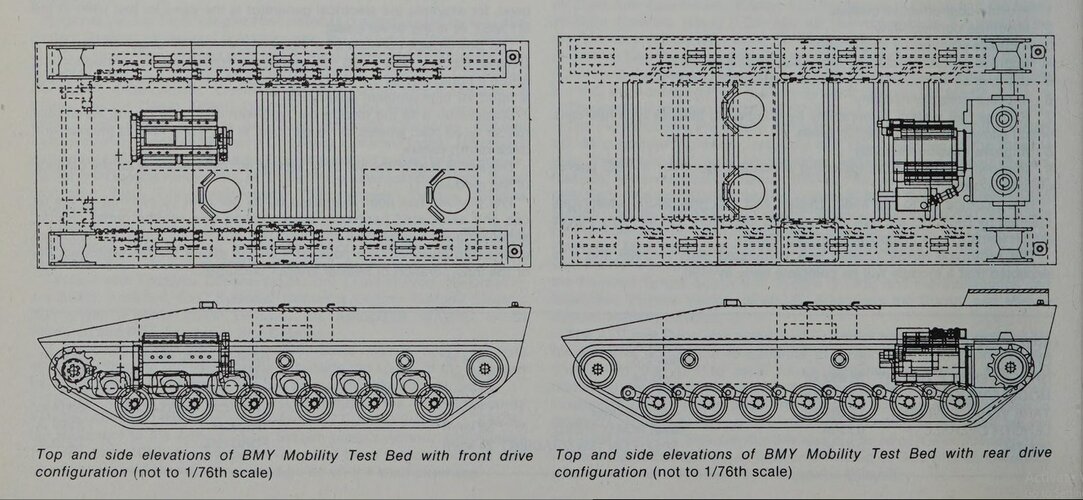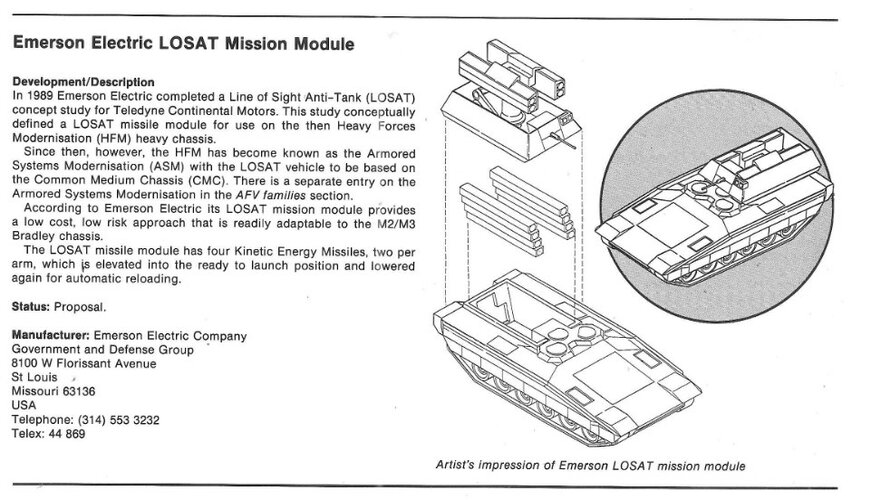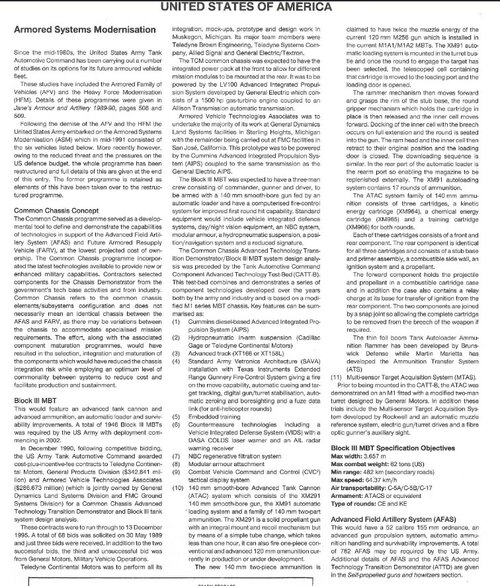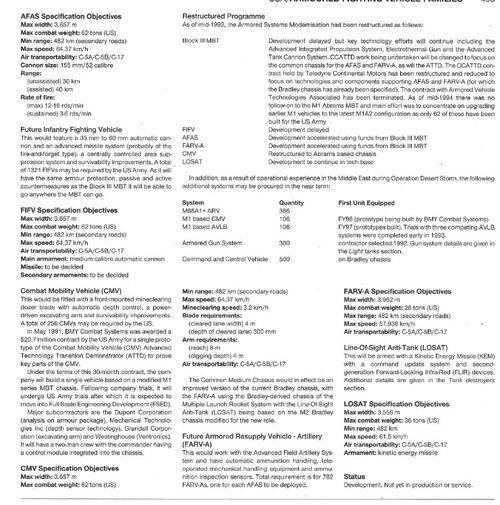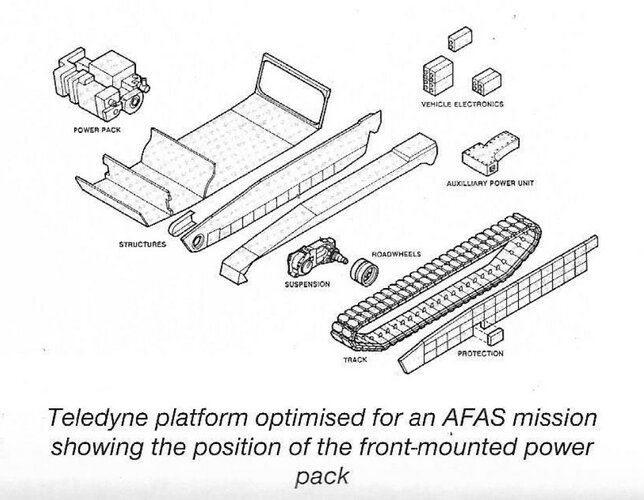I'm posting a report that includes the full Armored Family of Vehicles list.
The actual discussion of the list starts on page 210. Note that in various sections of the report the list differs and names differ a bit, for example 9-11 may be under one entry for resupply, but on the whole you should get the gist.
https://archive.org/details/DTIC_ADA210352/mode/2up
(1) Future Armored Combat System (FACS).
(2) Future Infantry Fighting Vehicle (FIFV).
(3) Future Reconnaissance Vehicle (FRV).
(4) Directed Energy Weapons Vehicle (DEW-V).
(5) Mortar Weapon System Vehicle (MWS-V).
(6) Advanced Field Artillery System-Cannon (AFAS).
(7) Fire Support Combat Observation (FSCOLS).
(8) Elevated Target Acquisition System (ETAS).
(9) Armored Rearm System.
(10) Armored Refuel System. Arm. Resupply Veh.
(11) Armored resupply System
(12) Nuclear, Biological, and Chemical Reconnaissance (NBCRS)
(13) Sapper (SFV)
(14) Combat Earthmover (CEM)
(15) Combat Mobility vehicle
(16) Combat Gap Crosser
(17) Combat Excavator
(18) Mine Dispensing Vehicle
(19) Recovery Vehicle (RV)
(20) Maintenance and Repair System
(21) Intelligence and Electronic Warfare Vehicle
(22) Combat Support Smoke Vehicle (CSSV).
(23) Armored Escort/Security Vehicle (AE/SV)
(24) Armored Ambulance (AA).
(25) Battalion Aid Station/MEDEVAC.
(26) Line of Sight-AntiTank (LOS-AT).
(27) Line of Sight-Air Defense (LOS-AD).
(28) Non-Line of Sight (NLOS-AT/AD).
(29) Non-Line of Sight (NLOS-AT/AD).
(30) Command Group Vehicle (GCV).
(31) Command and Control Vehicle (C2V).
(32) Rocket and Missile System (RAMS)
Note on 7, it is also listed as FIST, and includes a laser designation system.
231 and 232 are also of interest, 231 has an unnumbered list with more descriptive names while 232 has an illustration showing how the various vehicles relate to each other.
The basic idea is to use two base tracked vehicles, one heavy and one medium, as platforms to build the other vehicles on. Boxer would be an example of this idea in use, as would the cancelled SEP systems from Sweden. I've also seen a third base vehicle, this one wheeled, listed as a light platform, with a couple of sub-vehicle types. The document is mid-80s though before the West jumped on the wheeled AFV wagon.





